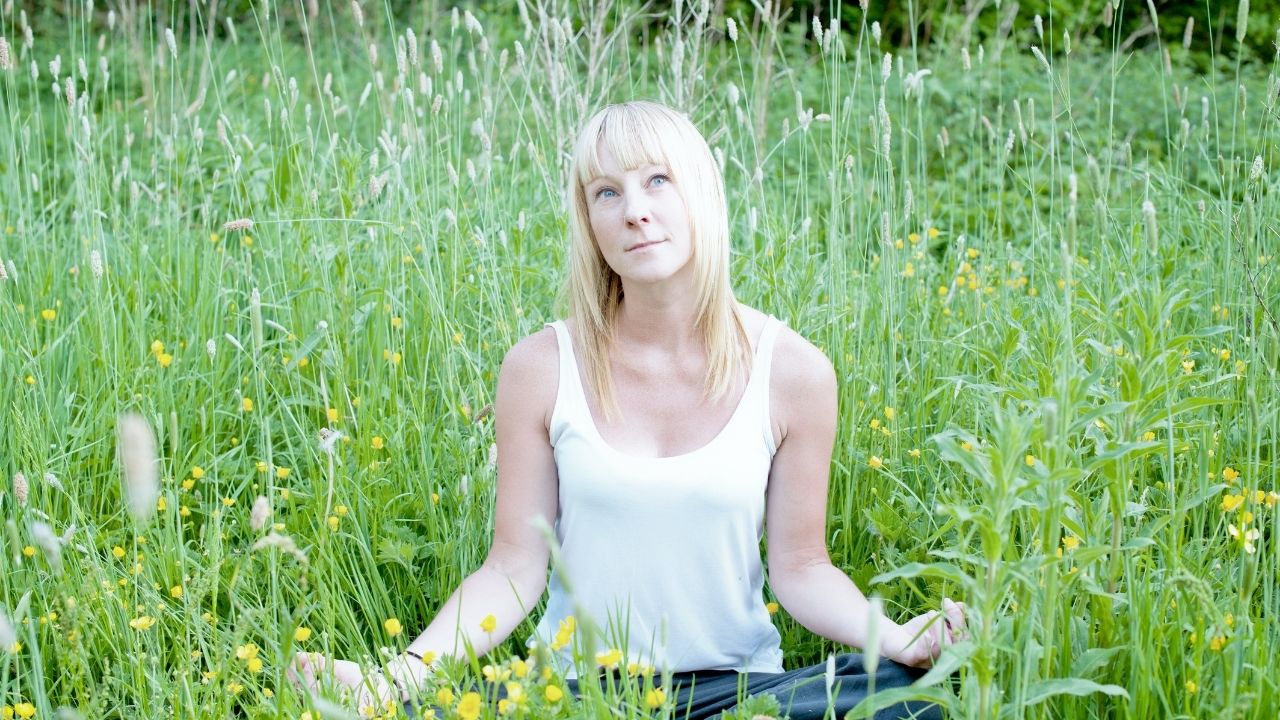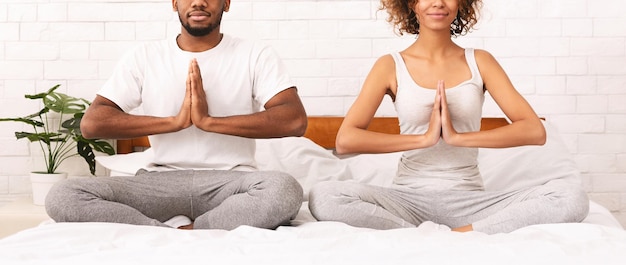
Box breathing is a popular meditation technique. It is used often by people who are experiencing stress. This technique can be used to treat a range of physical and emotional conditions. It is also useful for labor and training. It involves exhaling air from the chest for two or three counts, keeping a neutral feeling throughout the exercise. It should be practiced as often as possible to maintain its benefits. You will be able to use the technique in many ways.
Box breathing is most effective when done in the beginning of anxiety reduction. This simple method is easily done anywhere. It is important that you breathe deeply through your nose. Once you've relaxed all your muscles, take a deep breath through your nose and then out through your mouth. You can do this even if there are distractions. Soon, you'll begin to experience the benefits associated with box breathing.

Box breathing has many benefits beyond stress relief. This meditation technique improves emotional well-being by increasing blood flow to the lungs. This meditation method is effective in treating anxiety, panic disorder, depression, and post-traumatic stress. It can also improve your quality of sleep. It promotes sleep by tapping into the parasympathetic nerve system. Box breathing is a great option for those suffering from insomnia.
Many benefits can be derived from box breathing. While it can be done any time you like, the best time to practice box breathing is when your stress levels are high. You will get the best results if you do it when your anxiety is at its highest. The benefits of box breathing include improving concentration, lowering stress and even decreasing depression. It is ideal for people living in stressful or high-stress environments. So start practicing today and experience the benefits for yourself.
A slow, deep breath is essential for the box breathing method. Take a deep breath and hold it for four seconds. Once you've done this, you should be able to feel your lungs fill up with air. Next, you can hold your breath for 4 counts. As you breathe out, keep your eyes open for four seconds. It can clear your mind and help you focus on counting. Your chances of success increase the more you practice.

While box breathing is similar to counting sheep, it is not a meditation. This exercise focuses on the rhythm of your body. As long as you have a table, it can be done anywhere. The practice is also free. You can use it to help you deal with anxiety attacks and panic attacks. Focus on the movements of the body and find a comfortable position to exercise.
FAQ
Supplements and herbs can improve immunity
It is possible to boost immune function by using herbs and natural remedies. Ginger, garlic, ginger, echinacea and ginkgo biloba are some of the most common.
However, these herbal remedies should not replace conventional medical treatment. They may cause side effects such as nausea, diarrhea, stomach cramps, headaches, dizziness, and allergic reactions.
What are the 10 most delicious foods?
These are 10 of the best foods to eat.
-
Avocados
-
Berries
-
Broccoli
-
Cauliflower
-
Eggs
-
Fish
-
Grains
-
Nuts
-
Oats
-
Salmon
Which lifestyle is best for your health?
Healthy lifestyles include eating healthy food, regular exercise, good sleep, and avoiding stress. You will live a long and happy life if you adhere to these guidelines.
You can start by making small changes in your diet and exercise routine. For example, if you want to lose weight, try walking for 30 minutes every day. If you're looking for a way to increase your activity, consider taking up swimming or dancing. You could also join an online fitness program like Fitbit or Strava that tracks your activity levels.
Here are 7 ways to live a healthy lifestyle.
-
Eat right
-
Exercise regularly
-
Good sleep
-
Get plenty of water.
-
Get enough sleep
-
Be happy
-
Smile often
What are the top 10 healthy habits?
-
Get breakfast every morning.
-
Don't skip meals.
-
You should eat a balanced diet.
-
Drink plenty of water
-
Take care to your body.
-
Get enough sleep.
-
Stay away from junk foods.
-
Get at least one form of exercise each day.
-
Have fun
-
Find new friends
Why does our weight change as we get older?
How do I know if my bodyweight changes?
Weight loss occurs when there is less fat than muscle mass. This means that daily calories should be less than daily energy. Reduced activity is the leading cause of weight gain. Other factors include stress, illness and pregnancy. If there is more body fat than muscle mass, then weight gain can occur. This happens when people consume more calories than they burn during the day. There are many reasons for this, including overeating and increased physical activity.
The primary reason we lose weight is that we consume less calories than what we burn. The main reason we lose weight is because we exercise more often. This increases our metabolism rate and burns more calories each day. This does not necessarily mean that we will get thinner. What is more important is whether or not our body is losing or gaining weight. If we're burning more calories that we consume, we'll lose weight. If we consume more calories that we burn, we are actually storing them in fat.
As we grow older, we tend to become slower at moving around and therefore we don't move as much. We also tend not to eat as much food as we used to when we were younger. This is why we tend to gain weight. On the flip side, we tend to have more muscle mass so we look bigger than we really are.
Without weighing yourself each week, there is no way to know how much weight you have lost. There are many options for measuring your weight. You can check your waist size, your hips, your thighs, your arms, etc. Some prefer to use bathroom scales, while others prefer tape measures.
For a better track of your progress, try to weigh yourself once per week and measure your waistline once every month. To track your progress, you can also take photos every few months of yourself to see how far it has come.
Online measurements of your height and weight can help you determine your body mass. For example, if you're 5'10" tall and weigh 180 pounds, you'd probably weigh 180 pounds.
Statistics
- WHO recommends reducing saturated fats to less than 10% of total energy intake; reducing trans-fats to less than 1% of total energy intake; and replacing both saturated fats and trans-fats to unsaturated fats. (who.int)
- This article received 11 testimonials and 86% of readers who voted found it helpful, earning it our reader-approved status. (wikihow.com)
- nutrients.[17]X Research sourceWhole grains to try include: 100% whole wheat pasta and bread, brown rice, whole grain oats, farro, millet, quinoa, and barley. (wikihow.com)
- WHO recommends consuming less than 5% of total energy intake for additional health benefits. (who.int)
External Links
How To
What does the word "vitamin" mean?
Vitamins are organic compounds naturally found in food. Vitamins help us absorb nutrients from foods we eat. Vitamins cannot be made by the body; they must be taken from food.
There are two types of vitamins: water soluble and fat soluble. Water-soluble vitamins dissolve in water easily. Vitamin C,B1(thiamine), B2 (2riboflavin), and B3 (3niacin), as well as vitamin C,B1, B2 (riboflavin), and B3 (niacin), vitamin B6 (pyridoxine), vitamin folic acid (biotin), pantothenic, and choline are examples. The liver and fat soluble vitamins are stored within the liver and in fatty tissue. Vitamin D, E, K and A are some examples.
Vitamins can be classified by their biological activity. There are eight major groups of vitamins:
-
A – Essential for normal growth, and the maintenance of good health.
-
C – essential for proper nerve function.
-
D - Vital for healthy bones and teeth
-
E is needed for good reproduction and vision.
-
K - essential for healthy muscles, nerves, and bones.
-
P - Essential for strong bones and teeth.
-
Q - aids digestion, absorption and absorption iron
-
R - Red blood cells are made from red blood cells.
The recommended daily allowance (RDA), for vitamins, varies depending upon age, gender, or physical condition. The U.S. Food and Drug Administration, (FDA), sets the RDA value.
For adults over 19, the RDA for vitaminA is 400 micrograms per daily. Because it is essential for the development of the fetus, pregnant women should consume 600 micrograms per daily. Children ages 1-8 require 900 micrograms per day. For infants younger than one year, 700 micrograms are required daily. However, this number drops to 500 micrograms each day for children aged 9-12 months.
Children between the ages 1--18 years old who are overweight or obese require 800 micrograms per Day, while those who are overweight or obese need 1000 micrograms. To meet their nutritional needs, children underweight and obese require 1200 micrograms a day.
Children ages 4-8 years who have been diagnosed with anemia need 2200 micrograms per day of vitamin C.
2000 micrograms are required daily for good health in adults over 50. Mothers who are pregnant, nursing, or have a high nutrient need will require 3000 micrograms a day.
Adults over 70 need 1500 micrograms daily, as they lose 10% of their muscle every ten years.
Women who are pregnant or lactating need more than the RDA. Pregnant women need 4000 micrograms per dayduring pregnancy and 2500 micrograms per day after delivery. Breastfeeding mothers need 5000 mg per day when breastmilk is being produced.